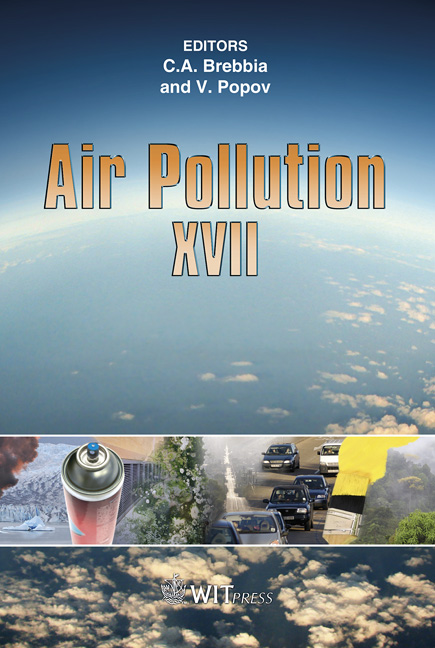Synergies Between Energy Efficiency Measures And Air Pollution In Italy
Price
Free (open access)
Transaction
Volume
123
Pages
8
Page Range
431 - 438
Published
2009
Size
497 kb
Paper DOI
10.2495/AIR090391
Copyright
WIT Press
Author(s)
T. Pignatelli, M. Bencardino, M. Contaldi, F. Gracceva & G. Vialetto
Abstract
Greenhouse gases, such as carbon dioxide, and atmospheric pollutants, such as sulphur, nitrogen oxides and particulate matter, are mainly generated from energy production and consumption. For several years the European Commission has given great importance to the control of atmospheric pollutants, establishing emission limits for LCPs (Large Combustion Plants), as well as national emission ceilings, at Member State level. The development of energy scenarios is the most crucial step in creating emission projections of air pollutants and greenhouse gases from energy sources, and \“business as usual” (b.a.u.) energy scenarios are normally considered to elaborate upon reference emission scenarios, on the basis of the abatement measures ruled in the current legislation. However, the b.a.u. energy scenarios could be deeply modified by the implementation of policies and measures aimed at energy saving, so emphasising the synergies existing between Air Quality and Climate Change, and at the same time reducing the abatement costs to ultimately protect human health and the environment. From this point of view, energy efficiency and renewable sources comprise two essential policy instruments to achieve the final objective. In this paper, an alternative energy scenario, taking into account a set of policies for increasing the energy efficiency and the share of renewable sources, is analysed and assessed in terms of decreased air pollutants and carbon dioxide emissions. Synergies and trade offs in air pollution are also analysed through a comparative and quantitative analysis of the reference and alternative scenarios, under the commitment to achieve the reduction objectives. The study has been carried out by the GAINS-Italy model, a national integrated assessment model developed by ENEA in collaboration with the International Institute for Applied Systems Analysis (IIASA) in Laxenburg. The modelling activity is ongoing under the sponsorship of the Italian Ministry for the Environment, the Land and the Sea. Keywords: air pollution, climate change, integrated assessment modelling, emission scenarios, cost curves, GAINS, GHGs.
Keywords
air pollution, climate change, integrated assessment modelling, emission scenarios, cost curves, GAINS, GHGs





